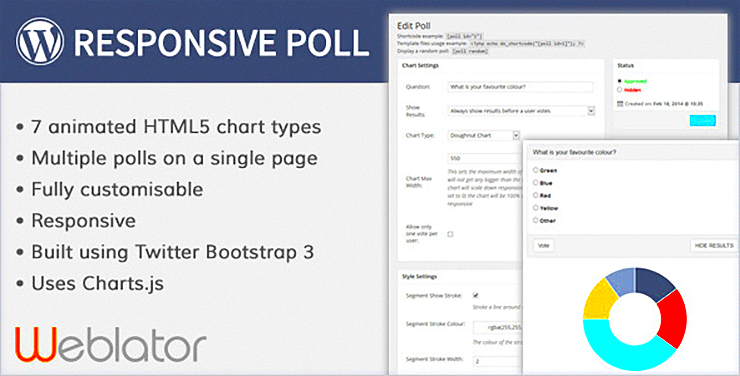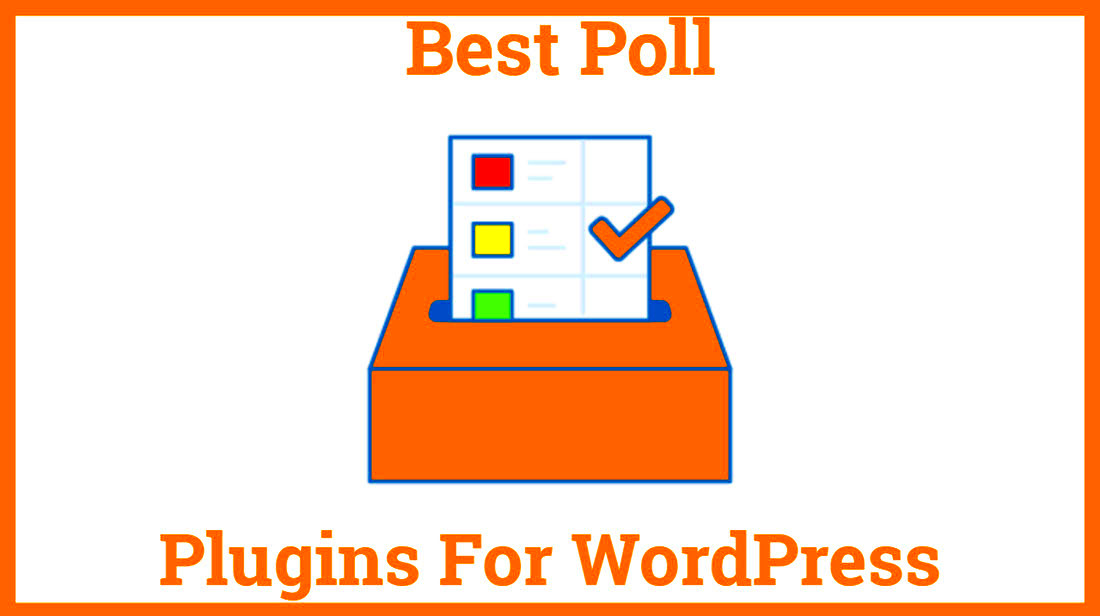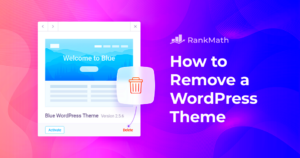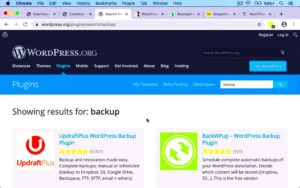WordPress poll plugins are handy tools that allow website owners to engage with their audience in a fun and interactive way. By incorporating polls into your WordPress site, you can gather feedback, understand visitor preferences, and create a sense of community among your users. Whether you’re running a blog, an e-commerce site, or a forum, polls can significantly boost interaction. In this post, we’ll dive deeper into what these plugins offer and how they can benefit your website’s engagement strategy.
Benefits of Using Polls on Your WordPress Site

Integrating polls into your WordPress site can transform visitor interaction. Here’s why adding polls can be a game-changer:
- Enhanced Visitor Engagement: Polls provide a quick and easy way for visitors to express their opinions, making them feel more involved.
- Instant Feedback: You can gather opinions in real-time, helping you make informed decisions about content, products, or services.
- Content Ideas: Analyzing polling results can inspire new content ideas or topics your audience is eager to read about.
- Increased Sharing Potential: Engaging polls can encourage readers to share their opinions on social media, expanding your reach.
- Builds Community: Polls foster a sense of belonging among users by highlighting shared interests and opinions.
Beyond these benefits, polls can also enhance user experience by breaking the monotony of browsing and making interactions feel more dynamic. Therefore, if you’re looking to spice up your WordPress site, incorporating a poll plugin might be just the remedy you need!
Top WordPress Poll Plugins to Consider
When it comes to engaging your audience on a WordPress site, the right poll plugin can make all the difference. With so many options available, choosing the best one might feel overwhelming. But don’t worry! Here’s a curated list of some top WordPress poll plugins to consider, each with its features and benefits that can help you get started:
- WP Polls: This user-friendly plugin allows you to create simple and customizable polls. One of its standout features is the ability to display results in real-time. Plus, it integrates smoothly with various themes!
- YOP Poll: YOP Poll offers a wide range of capabilities, including the option to schedule when polls go live. You can also view detailed statistics, making it easier to analyze engagement. If you want to create recurring polls, this plugin is a great choice!
- Poll, Survey, Quiz & Form by OpinionStage: Not just a poll plugin, this tool allows you to create engaging surveys and quizzes, which can help maintain audience interest. The visual design is polished, and the customization options are extensive.
- Forms by WPForms: WPForms is a comprehensive form-building plugin that also allows for poll creation. It is particularly user-friendly, with a drag-and-drop interface, making it perfect for beginners. It also offers advanced features if you need them!
- WP Survey and Poll: This plugin simplifies the process of creating both surveys and polls. Features like multiple question types and result analytics enable you to craft more engaging polls that offer insights into your audience’s preferences.
Choosing the right plugin depends on your specific needs and how you want to engage your audience. Try a few of these options and see which one resonates best with your community!
How to Install a WordPress Poll Plugin
Installing a WordPress poll plugin is simpler than you might think! Just follow this straightforward guide, and you’ll have your poll up and running in no time.
- Login to Your WordPress Dashboard: Start by logging into your WordPress admin area. You’ll find all the tools you need right here!
- Navigate to Plugins: On the left-hand side, locate the “Plugins” menu item and click on it. This will lead you to an overview of all your installed plugins.
- Add New Plugin: Click the “Add New” button at the top of the page. Here, you will find a search bar to look for the poll plugin you decided on.
- Search for Your Plugin: Type the name of your chosen plugin (e.g., WP Polls, YOP Poll, etc.) in the search bar. Look for the plugin in the search results, and when you find it, click the “Install Now” button.
- Activate the Plugin: Once the installation finishes, the button will change to “Activate.” Click that to enable the plugin on your site.
- Configure Plugin Settings: After activation, you’ll usually see a new menu item related to the plugin in your dashboard. Click on it to access settings, where you can customize your poll according to your preferences.
- Create Your First Poll: Most plugins will provide a simple interface for creating polls. Fill in desired options, and save your settings. Make sure to check if you want the poll to display on a specific post or page.
That’s it! With these steps, your WordPress poll plugin will be up and running, ready to engage your audience and gather insights. Don’t forget to experiment with different polls to keep the excitement alive!
5. Creating Your First Poll: Step-by-Step Guide
Getting started with your first poll in WordPress is easier than you might think! Here’s a simple step-by-step guide to help you create a poll that engages your audience.
- Install a Poll Plugin: First, choose a WordPress poll plugin that fits your needs, such as WP Polls, WP Polling, or YOP Poll. After selecting one, navigate to the “Plugins” section in your WordPress dashboard, click “Add New,” and search for your chosen plugin. Click “Install” and then “Activate.”
- Create a New Poll: Once activated, you’ll usually find the plugin in your dashboard’s sidebar. Click on it, typically labeled as “Polls,” “Add Poll,” or something similar. Here, you can start crafting your new poll.
- Define Your Poll Question: The most critical part! Think about what you want to learn from your audience. Write a clear and concise question that is easy to understand.
- Add Your Poll Choices: List your options below the question. Aim for a balance of choices that will engage everyone. Try to keep it limited to 4-5 options to avoid overwhelming your audience.
- Customize Poll Settings: Most plugins have various settings. You can decide whether to allow multiple votes, restrict voting to logged-in users, or add expiration dates. Customize based on your goals!
- Embed the Poll in Your Post or Page: After saving your poll, you’ll usually get a shortcode. Copy this shortcode and paste it into the post or page where you want it to appear.
- Preview and Publish: Preview your post to ensure the poll displays correctly. Once satisfied, hit publish and share your post with your audience!
6. Best Practices for Crafting Engaging Polls
Crafting a poll that truly engages your audience can be a game-changer for your site! Here are some best practices to keep in mind:
- Be Clear and Concise: Your poll question should be straightforward. Avoid using jargon or complex language. A simple question encourages more participation.
- Limit Your Options: Providing too many choices can confuse voters. Aim to give 3 to 5 options. This makes it easier for your audience to choose and increases the likelihood of responses.
- Make It Relevant: Polls should relate to your content and audience interests. Tailoring your questions to current trends, recent articles, or topics in your niche can draw more interest.
- Incorporate Fun Elements: Light-hearted or humorous questions often yield better engagement. A funny poll question can spark interest and encourage sharing!
- Ask Open-Ended Questions Occasionally: While multiple-choice questions work great, consider including open-ended questions to gather qualitative data. This can provide deeper insights.
- Use Visuals Wisely: If your plugin allows it, consider using images or emojis to illustrate choices. Visual elements can make your poll more appealing and engaging.
- Promote Participation: Don’t just leave the poll running silently. Promote it through social media posts, newsletters, or on-site announcements to maximize exposure.
- Analyze the Results: After the poll concludes, take time to analyze the findings. Share the results and thoughts with your audience to foster a two-way dialogue!
Following these practices will help you create engaging polls that not only gather valuable feedback but also keep your audience actively participating in your content.
7. Analyzing Poll Results and Making Data-Driven Decisions
So, you’ve run a poll on your WordPress site, and the responses are in—what’s next? Analyzing poll results is a crucial step that transforms this data into actionable insights. Here’s how you can make sense of the numbers:
- Data Interpretation: First off, look at the overall trends in the responses. Are there particular options that stand out? Consider visualizing the data with graphs; they often provide a clearer picture than raw numbers.
- Segmenting Results: It’s helpful to break down the results by different demographics if possible. For example, you could analyze responses by age, location, or user behavior on your site. This will allow you to tailor your content and marketing strategies.
- Identifying Patterns: Keep an eye out for recurring themes or sentiments. If multiple users express a similar opinion, it could indicate an opportunity for new content, products, or services.
- Comparative Analysis: If you’ve run polls in the past, compare this data against previous results. Has audience sentiment shifted? Are you gaining new insights into your audience’s preferences?
- Making Decisions: Finally, translate your findings into strategies. For instance, if a poll shows that visitors prefer video content 70% of the time, it’s time to ramp up your video production efforts.
Use your poll data as a roadmap; the insights you uncover should guide your decisions, from content creation to marketing strategies. Remember, data-driven decisions are much more effective than going with your gut!
8. Enhancing User Engagement Beyond Polls
Polling your audience is a fantastic way to engage them, but it shouldn’t be the only tool in your toolbox. Here are some other engaging methods to keep your audience coming back for more:
- Interactive Quizzes: These are a fun way to get people involved! Quizzes can be educational or just plain entertaining. Plus, they often lead users to share their results on social media, driving traffic to your site.
- Comment Section Engagement: Encourage users to leave comments or opinions on posts. You can prompt them with questions related to your content, prompting discussions that can boost on-site engagement.
- Live Chat Features: Offering real-time chat support or discussion forums can significantly enhance user experience. This not only boosts engagement but also gives users a platform to voice their thoughts and questions.
- Contests and Giveaways: Who doesn’t love a chance to win? Hosting contests can drive excitement and participation. Just make sure the prizes are relevant to your audience.
- Personalized Content: Utilizing user data to personalize content suggestions can create a more engaging experience. Recommend posts or products based on their previous interactions—this makes users feel valued.
By incorporating these strategies, you’ll cultivate a more engaged and loyal audience. Remember, the goal is to create a community where users feel involved and valued, not just passive consumers of your content.
Common Issues and Troubleshooting Tips
When you dive into using a WordPress poll plugin, you might encounter some hiccups along the way. But don’t fret! Here are some common issues along with their troubleshooting tips to help you sail through smoothly.
- Plugin Compatibility: One of the most frequent problems is plugin conflicts. If your poll isn’t working, it could be due to another plugin interfering with it. To resolve this, try disabling other plugins one by one and check if the poll starts functioning again.
- Display Issues: Sometimes, polls may not display correctly on your website. This could be due to theme incompatibilities. To troubleshoot, switch to a default theme temporarily and see if the poll appears. If it does, consider reaching out to the theme developer for solutions.
- Data Collection Problems: If you notice you’re not receiving responses or results, ensure you have correctly configured your poll settings. Double-check that responses are being saved by revisiting the plugin’s documentation for specific settings.
- Styling and Customization: Customizing poll appearances can sometimes lead to unexpected results. If your polls aren’t looking how you envisioned, check if you’ve added any CSS that might be conflicting with the plugin’s styles.
- Responsive Display Issues: Polls that look great on desktop may not render well on mobile. Always test your polls on multiple devices. Most popular plugins allow you to adjust mobile display settings separately.
If you continue to face issues, don’t forget that many plugin developers offer support forums or documentation that can provide more in-depth assistance. Engaging with the community can also yield valuable solutions!
Conclusion: Boosting Engagement with WordPress Polls
In the vast sea of digital content, how do you keep your audience hooked? One effective way is through WordPress polls. Not only do they invite your audience to share their opinions, but they also create an interactive experience that is often lacking in blog posts today. Polls can be a fun and effective tool to encourage participation and gain insights into what your readers truly want.
By integrating polls into your website, you can:
- Drive Engagement: Polls spark conversation. They motivate readers to comment and discuss, thereby increasing the time they spend on your site.
- Gather Valuable Data: Knowing what your audience thinks helps you tailor your content strategy to their preferences.
- Create a Community: Polls foster a sense of belonging among readers who feel their opinions matter, leading to higher loyalty.
In conclusion, incorporating a WordPress poll plugin isn’t just about adding another feature to your site; it’s about creating a vibrant, interactive environment for your audience. So go ahead, get creative, and watch your audience engagement soar!



